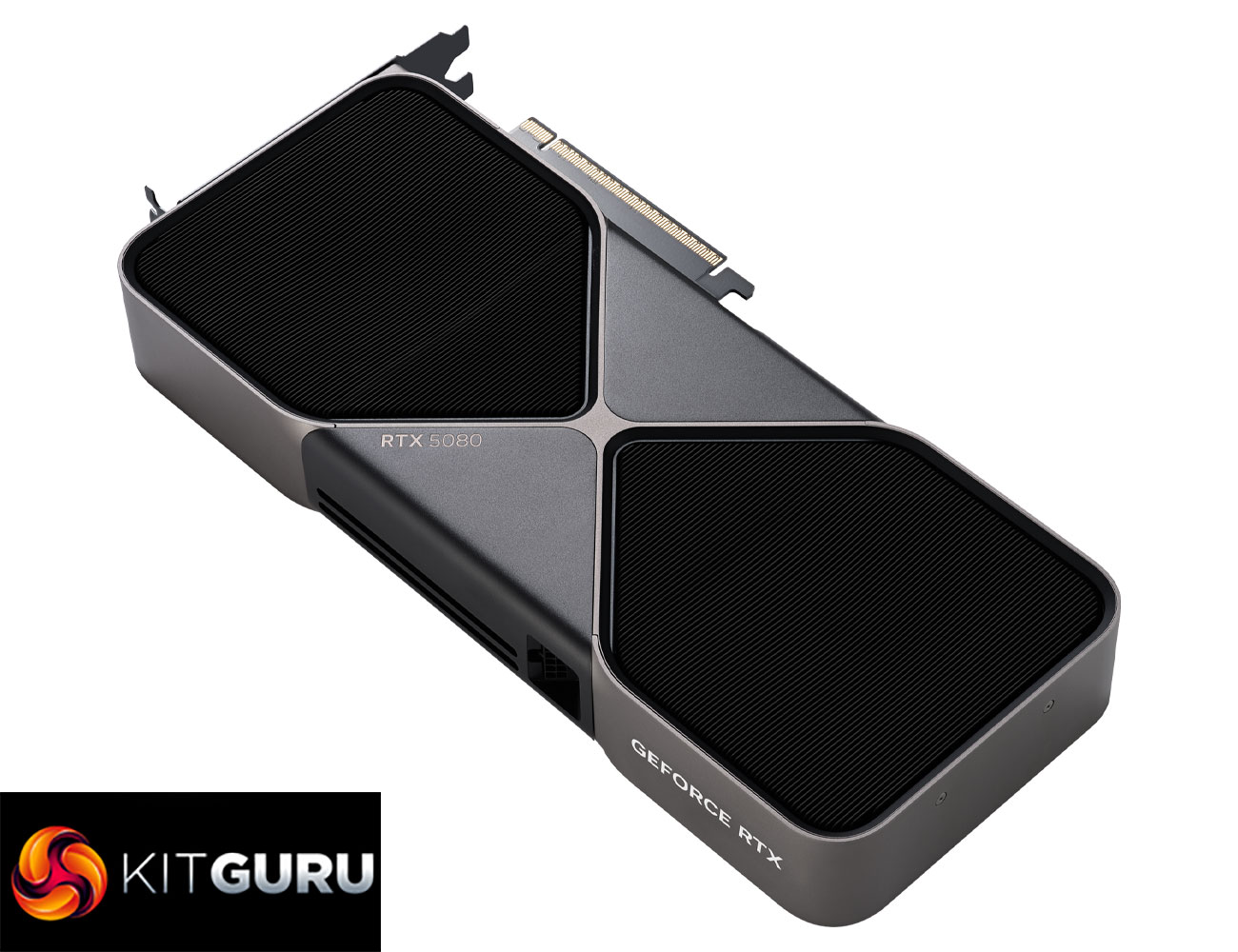After reviews of the RTX 5090 went live last week, today we have put Nvidia's RTX 5080 through its paces. Hitting the market at a more accessible – but still very expensive – asking price of £979/$999, the RTX 5080 is aimed at gamers with deep pockets who can't quite stump up another grand for the RTX 5090.
That positioning makes the RTX 5080 a direct successor to the RTX 4080 Super, and today we saw performance gains of 13% on average for the new Blackwell GPU. As such, things are surprisingly close up against the RX 7900 XTX, with the 5080 coming in just 8% faster when looking at raster performance. Additionally it is 15% slower than the RTX 4090 and 34% behind the RTX 5090.
When enabling ray tracing, the RTX 5080 does at least crush AMD's current flagship, delivering performance that's 57% better, something we'd certainly expect given Nvidia's prowess in this department. Scaling is otherwise very similar when compared to Nvidia's own GPUs, as the RTX 5080 is 12% faster than the 4080 Super and 19% slower than the RTX 4090.
Now, you're probably thinking it, and I have to agree – those sorts of numbers are clearly disappointing. Just a 13% gain over the previous xx80 SKU is hardly cause for wild celebration, while this class of GPU has never been further behind the Nvidia flagship – gone are the days when something like the RTX 3080 was just 15% slower than the RTX 3090, for basically half the cost.
That said, things don't look quite so bad if we take a step back. Up against the RTX 3080 Ti, for instance, a GPU that launched in mid-2021 for £1049, the RTX 5080 is over 50% faster for rasterisation, and that increases to a 70% margin when looking at ray tracing performance. That means anyone upgrading from an older xx80-class GPU will see a decent improvement, but it's still not a mind-blowing leap forward – after all, the jump from the RTX 2080 to the RTX 3080 was roughly 70% from just a single generation, but that type of gen-on-gen increase seems to be a thing of the past.
For those who use their GPUs for more than just gaming, though, we did see a few instances of more eye-catching performance improvements. AI text generation, particularly using the Llama 2 and Llama 3.1 models, saw scores increase by over 20% compared to the RTX 4080 Super, and the same can be said for V-Ray RTX rendering performance.
On top of that, despite remaining on TSMC's 4N node, the RTX 5080 does bring with it some improvements to overall efficiency. I was concerned to see a performance per Watt regression when testing the RTX 5090, but the 5080 has things back on track and is actually the most efficient GPU we've ever tested. Not by much, admittedly, but performance per Watt has improved by about 10% compared to the RTX 4080 Super, so Nvidia has clearly been able to work in some architectural advantages, even without a die shrink.
Nvidia also points to its new DLSS 4 technology, and specifically Multi Frame Generation, as a key selling point for the RTX 50 series. After first getting hands on with it during the RTX 5090 review, overall behaviour is exactly as expected with the RTX 5080, so I think it's a good feature to have. It's not perfect from a visual perspective and it, crucially, doesn't solve the latency problem of the previous Frame Gen implementation. I'd certainly rather have it than not, but I don't think it's reason alone to upgrade to a Blackwell GPU.
Elsewhere, the Founders Edition design continues to impress us, even if changes have been made versus the RTX 5090. Gone is the 3D Vapour Chamber, for instance, and instead we have a more traditional heatpipe and baseplate cooling solution. It's still a highly effective double flow through cooler, though, resulting in a GPU temperature of just 65C during our thirty minute stress test, while the VRAM topped out at 76C. It'll be interesting to see what Nvidia's partners can do with their custom cards, so stay tuned for those reviews coming up over the next few weeks.
Overall, I think it's fair to say the RTX 5080 is hardly going to set the world alight. It's not terrible, launching at the same price as the outgoing RTX 4080 Super and offering at least some performance gains, but it's only a very small step forward. The unfortunate reality is that Nvidia has little incentive to push this market segment forward given the lack of competition. Sure, the RX 7900 XTX is there or thereabouts when it comes to rasterisation performance, but it gets mullered when looking at ray tracing, efficiency, AI & productivity workloads, plus FSR still isn't on the same level as DLSS, especially given Nvidia's new Transformer-based model.
If the RTX 5090 is really the RTX 4090 Ti, as some have called it, then the RTX 5080 feels more like an RTX 4080 Ti Super rather than a true generational leap. But the fact remains, if you want the fastest graphics card that isn't the RTX 5090, it's really your only option.
RTX 5080 is launching at retail tomorrow, January 30th, with prices starting at £979/$999.
Discuss on our Facebook page HERE.
Pros
- Capable GPU for 4K gaming.
- New performance per Watt leader.
- Dual-slot Founders Edition runs cool and quiet.
- Some improvement to cost per frame and overall value versus the RTX 4080 Super.
- AI and productivity benchmarks showed some bigger-than-expected performance improvements.
- DLSS 4 has improved Ray Reconstruction and Super Resolution scaling.
- Multi Frame Generation enables higher frame rates than would otherwise be possible.
Cons
- Only limited gains over RTX 4080 Super which is disappointing.
- Bigger gulf than ever between the xx80 SKU and series flagship.
- RX 7900 XTX is surprisingly competitive for rasterisation (but falls off in basically every other area).
KitGuru says: The RTX 5080 hasn't blown us away, but it's still the card to get if you're looking to spend around a grand on a new GPU.
 KitGuru KitGuru.net – Tech News | Hardware News | Hardware Reviews | IOS | Mobile | Gaming | Graphics Cards
KitGuru KitGuru.net – Tech News | Hardware News | Hardware Reviews | IOS | Mobile | Gaming | Graphics Cards




